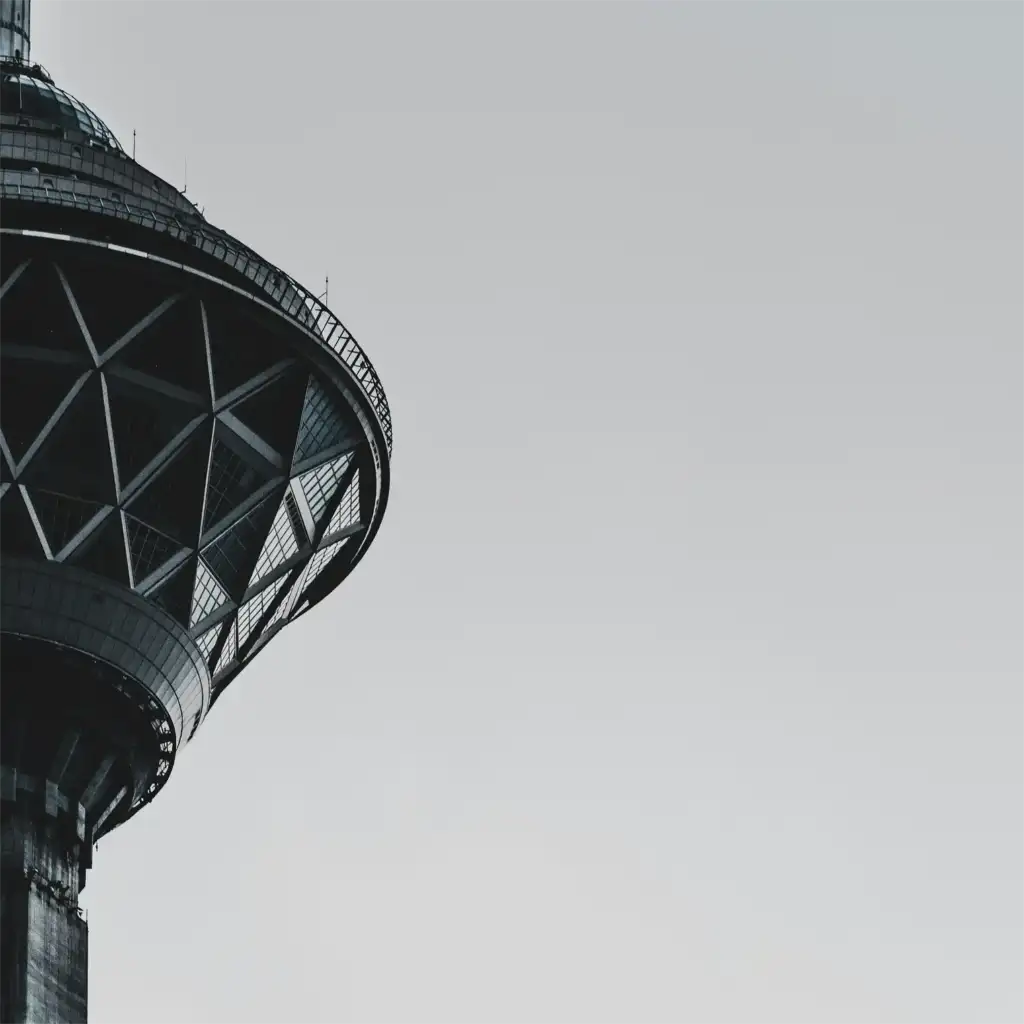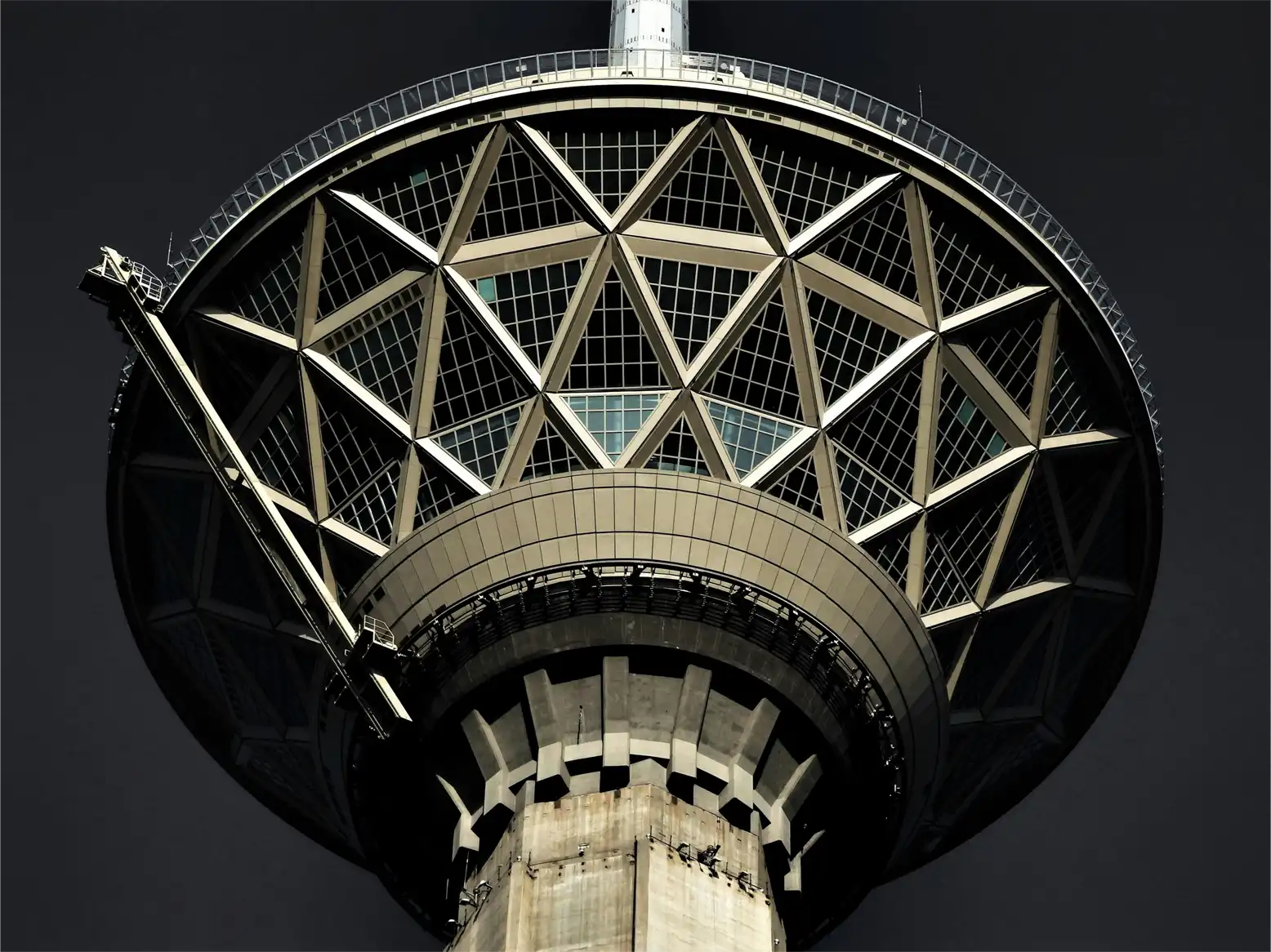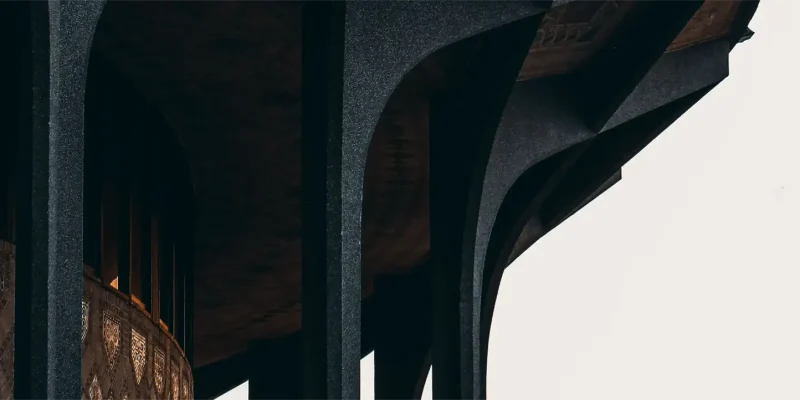
Tehran Milad Tower, or Borj-e Milad, soars high in Iran’s lively capital. As a modern symbol of Iranian culture and progress, this tower ranks among the tallest telecommunications towers . It fulfills its main role and stands as a key landmark showcasing Tehran’s goals and tech progress. With its special design and critical role, the tower draws in people worldwide. It mixes stunning architecture and new design showing the blend of old and new in Iranian culture.
In this article, readers jump into exploring the Milad Tower in Tehran examining its history and construction process. This reveals Iran’s ambitions and the technological hurdles it has cleared. The article also covers the tower’s architectural elements that stand out in modern engineering.
It will point out what makes the tower appealing, from its facilities to its offerings encouraging both tourists and locals to see its beauty up close. , the piece will touch on the cultural and social impact of Milad Tower underlining its role beyond a telecommunication hub, as a source of national pride and unity. This thorough look at one of Tehran’s landmarks aims to deepen your understanding of what makes it a focal point in the city’s skyline.
History and Construction of Milad Tower
Foundation and Early Vision
The Milad Tower part of the big Shahestan Pahlavi plan from the 1970s, was supposed to be a new center for government and business in Tehran. But the tower came to be. The beginning of this project came with a contest around the world that the Llewelyn Davies Company won. A big event happened on August 19, 1975 when Mohammad Reza Pahlavi, the Shah of Iran, and the Mayor of Tehran, Dr. G. R. Nickpay, put a gold plaque in the ground to start the project.
The Milad Tower, originally conceived as part of the ambitious Shahestan Pahlavi project in the 1970s, was intended to serve as a new governmental and commercial hub for Tehran. This grand vision, however, largely remained unrealized except for the tower itself. The project was initiated with an international competition, which was won by the Llewely Davies Company.

A significant moment in the project’s inception occurred on August 19, 1975, when Mohammad Reza Pahlavi, the Shah of Iran, alongside the Mayor of Tehran, Dr. G. R. Nickpay, buried a commemorative gold plaque, symbolizing the project’s commencement.
Architectural Design
The architectural prowess of the Milad Tower was led by Iranian architect Mohammad Reza Hafezi, who was instrumental in shaping the tower’s distinctive design. The design phase involved multiple stakeholders including Tarhotakvin Consulting Co. and Bahman Haghighi, who played key roles in the schematic design and design development phases. The main contractor roles were fulfilled by Boland Payeh Co. and Heydari Sazeh Co, overseeing all construction activities and managing sub-contractors and vendors.
Construction Milestones
Construction of the Milad Tower officially started in 1997 and spanned over a period of 11 years. The initial phase of the construction saw only 40% completion over the first 8 years. However, the project gained momentum under the leadership of Mohammad Bagher Ghalibaf, the then mayor of Tehran, who expedited the process, completing the remaining 60% in just 30 months. The tower was finally completed in the mid-2000s, and at that time, it was recognized as the fourth-tallest freestanding telecommunication tower globally.
Architectural Features
Height and Structure
Milad Tower stands as an impressive landmark in Tehran, reaching a height of 435 meters, which includes a 120-meter antenna mast. This makes it the sixth-tallest telecommunication tower globally and the tallest in Iran. The tower is composed of several key structures: the foundation, transition structure, shaft, head structure, and the antenna mast. The main shaft, a robust concrete structure, rises about 315 meters from the ground floor, and is equipped with six high-speed elevators on three sides, capable of moving visitors to the top at a speed of 7 meters per second, alongside an emergency staircase.

Observation Decks
At the head of the tower, a steel structure weighing approximately 25,000 tonnes houses 12 floors, which include a variety of facilities. These floors are home to a public art gallery, a cafeteria, a revolving restaurant, and a VIP restaurant. Additionally, there are telecommunication floors, mechanical floors, and fire-immune areas designed as refuge zones. The tower boasts both a closed and an open observation deck, along with a sky dome, offering visitors panoramic views of Tehran and its surroundings. The observation deck, located at a height of 315 meters, is a particularly popular feature, providing a 360-degree view of the cityscape.
Antennas and Technical Features
The Milad Tower’s four-stage antenna mast, which extends an additional 120 meters above the main structure, is critical for telecommunications. The lower floor of the mast adjusts public users’ telecommunication antennas, while the three upper floors are dedicated to the antennas of the Islamic Republic of Iran Broadcasting. This setup underscores the tower’s role as a major hub for broadcasting and telecommunications in Iran.
Visitor Attractions
Observation Deck
Milad Tower boasts breathtaking observation decks that provide unparalleled panoramic views of Tehran’s sprawling urban landscape and surrounding mountains. Visitors can immerse themselves in the city’s beauty from a towering vantage point, capturing iconic landmarks and the ever-changing cityscape. The closed and open observation decks, along with a sky dome, offer a unique opportunity to view the city from different perspectives.
Revolving Restaurant
One of the most renowned attractions within the Milad Tower complex is the Tehran 360 Restaurant, located on the sixth floor of the crown structure. This revolving restaurant, capable of accommodating 400 guests, offers a full panoramic view of Tehran as it completes a full rotation every hour. The restaurant provides a self-service dining experience, featuring an extensive range of dishes for breakfast, lunch, and dinner, including traditional Iranian cuisine, seafood, international delicacies, and specialty bird-shaped platters.
Sky Dome
The sky dome on the top floors of Milad Tower adds an additional layer of attraction for visitors. Positioned strategically to enhance the observational experience, the sky dome allows an even wider view of Tehran, making it a perfect spot for photography enthusiasts and casual viewers alike. This feature complements the observation decks and revolving restaurant, making the Milad Tower not just a telecommunication structure but a significant cultural and social venue.
Cultural and Social Significance
Events Hosted
Milad Tower has established itself as a pivotal venue for various significant events that resonate with cultural and social dynamics of Tehran. It hosts a wide array of gatherings ranging from international trade shows to cultural festivals. Notably, the tower has been the site for the CLI EXPO, a key international event in the chemicals and laboratory industry. Additionally, it has accommodated the Iranian National Steel Festival, highlighting its role in supporting industrial and commercial advancements.
Cultural Importance
The tower’s ability to attract major international and national conferences underscores its cultural importance. Events such as the National and International Conference on Insurance and Development, and the Biennial International Congress of Iranian Society of Knee Surgery, Arthroscopy & Sports Traumatology are just a few examples that showcase the tower as a hub for professional knowledge exchange and cultural congregation.
Festivals and Exhibitions
Milad Tower is not only a symbol of Tehran’s skyline but also a center for cultural festivities which attract both local and international attention. It has hosted the Fajr International Music Festival, an event that features performances by Iranian and foreign musical groups, creating a platform for cultural exchange and showcasing Iran’s openness to global cultural dialogues. The tower also serves as a venue for the Fajr International Film Festival and the International Radio and Television Exhibition, further cementing its status as a cultural landmark.

Conclusion
Through the exploration of Tehran Milad Tower, we have delved into the emblematic embodiment of Iranian ingenuity and cultural synthesis, highlighted by its architectural magnificence and the pivotal role it plays in telecommunications and broadcasting. The journey from its inception, through the challenges of construction, to its stature as a beacon of progress, showcases not only Tehran’s ambition but also Iran’s dedication to technological and cultural advancement. The tower’s design, its visitor attractions, and its significance as a venue for important cultural and social events, collectively enrich our understanding of its impact on both a local and international scale, solidifying its status as a remarkable landmark in the heart of Tehran.
Reflecting on the Milad Tower’s journey and the narratives that unfold at its heights and within its walls opens a window to the broader implications of such structures in cultivating national pride and fostering global connections. Its existence as a multifaceted icon, offering panoramic views of Tehran, hosting diverse events, and serving as a testament to technological achievement, evokes a deeper appreciation for how modern marvels can influence cultural identity and community. As we conclude, the Tehran Milad Tower emerges not just as a physical structure, but as a symbol of the confluence of tradition and modernity, inviting further exploration and understanding of its multifaceted contributions to society and culture.
FAQ
Milad Tower, also known as Tehran Tower, is the tallest tower in Iran and one of the most iconic landmarks in Tehran. Standing at 435 meters (1,427 feet), it serves as a multipurpose structure for telecommunications, entertainment, and tourism.
Visitors can explore the observation deck for panoramic views of Tehran, dine at the revolving restaurant, visit the art gallery, or attend events in the tower’s convention center. The tower also features a shopping mall and exhibits showcasing Iranian culture and history.
Milad Tower was completed in 2007 and officially opened in 2008. It is significant for its modern design, advanced telecommunications facilities, and its role as a cultural and entertainment hub in Tehran.
The best time to visit is in the late afternoon or evening. This allows visitors to enjoy daytime views, the sunset, and the city lights at night. Special events and festivals hosted at the tower also offer unique visiting experiences.
Milad Tower is located in District 2 of Tehran and can be accessed via private transportation, taxis, or ride-sharing apps. It is well-signposted, making it easy to reach for both locals and tourists.

